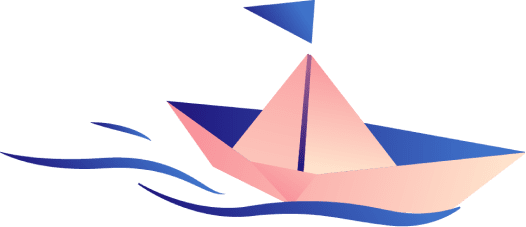The Anatomy of a Website: Discovery & Goals Analysis
Building a website is a lot like building a house. There are many steps in the process, each affecting the next and the overall outcome. There are sketches and blueprints, designs and color palettes, then framing and finishing. Your first questions are almost always “How much will it cost?” and “How long will it take?” – and without essential planning and thorough research, we aren’t able to accurately pinpoint those answers. Do you want a ranch style 2 bedroom or a sprawling mansion? The Italian granite or the Home Depot formica countertops? We need to do a little recon before we make these assessments.
This post is the first in a series entitled “The Anatomy of a Website” that will help shed light on the Big Sea process of building a website – both complex and simple – from start to finish. While the process differs slightly from project to project, I intend to explain the basic building blocks of a successful website design and development project so that you’ll have a better understanding of the planning, research, thought, work and of course, costs involved.
Let’s start from the beginning then, shall we?
 The Discovery Process
The Discovery Process
You’ve just called and talked to us about starting work on your website. You obviously have questions about what we do, how we do it and the most important question of all: how much does it cost. You probably got a rough idea of those answers through that initial phone conversation. Maybe you’ve gone through this before with another web studio or maybe you’ve talked to a friend who’s worked with us before. Either way, the seed is planted.
The next step is simple: we need to learn as much as possible about your business goals, marketing objectives, industry, competitors and marketplace. About where you want to go. About your staffing and content production intentions. About who you are and where you’ve been. We need to know.
We start this process with our Discovery Document (.docx). (Feel free to print and use this for any other marketing or design firms you might be working with – they’re really helpful questions that guide our design, strategic direction and proposal). Take your time with this and be as thorough as possible.
After you return this document, we’ll spend some time reviewing it. We visit the websites you’ve shared, we’ll study your competitors, read up on your industry, assess your peers, get familiar with your business objectives and follow up with any questions we might have.
Give us some time here. I know you’re eager to find out how much this project is going to cost, but wouldn’t you rather know that we’ve done our homework and that our estimate is thoroughly researched? We’re working on other projects too, with deadlines, so we’ll need a little space. I generally take a week for simple proposals or ten days to two weeks for larger proposals.
Depending on the scope of the project, the Discovery Document might provide all we need to create a formal proposal. If your project is a big development project or a much larger site, this document is just the springboard for our much more thorough planning stages that precede any formal estimates.
Goals Analysis and Strategic Objectives
Through conversations and the Discovery Document, we’ll establish recommendations for your site’s main communication goals. Are you trying to book appointments, make a sale, increase foot traffic to your store or encourage customer contact? Do you want to increase brand awareness or build credibility and expertise? The goals we determine as priority and secondary will determine the structure of your website and help us create clear calls to action (CTAs).
With each goal, we establish clear strategies, objectives and then web-based tactics that we can use to help guide design and development decisions. We can also outline measurable analytic goals to assess your site performance, like increasing site visitors, decreasing bounce rates or increasing time spent on your website.
Here’s an example of a goal from a recent project’s planning phase (this was one of 3 main site goals that guided our design process):
Goal: Create awareness of our commitment to social responsibility.
Strategy: Demonstrate our community involvement
Objective: Communicate social actions more effectively.
Website Tactics:
- Create organization and site-specific calendars of events to show all of the events in which we take part.
- Use blog to document specific causes and events with which you’re involved.
- Create feature area on homepage for causes and events; unique to each location and overall.
- Use the website to create hubs of information for flagship events and causes.
- Use email to invite participation and spread awareness.
Of course, each goal has multiple accompanying strategies, objectives and tactics. This can get pretty long, but it’s helpful to steer the process and help us trim the fat later in the project.
The goals document is a work-in-progress at this point. We’ll share it with you and work together to refine it with realistic tactics until we’re sure that all of the bases have been covered. This process can take a few weeks and few long conversations.
All this and we haven’t even started building your website … But oh, there’s more. After we agree on goals for your site, we talk through and negotiate strategies and tactics, then we start on content analysis and wireframes. Stay tuned!


